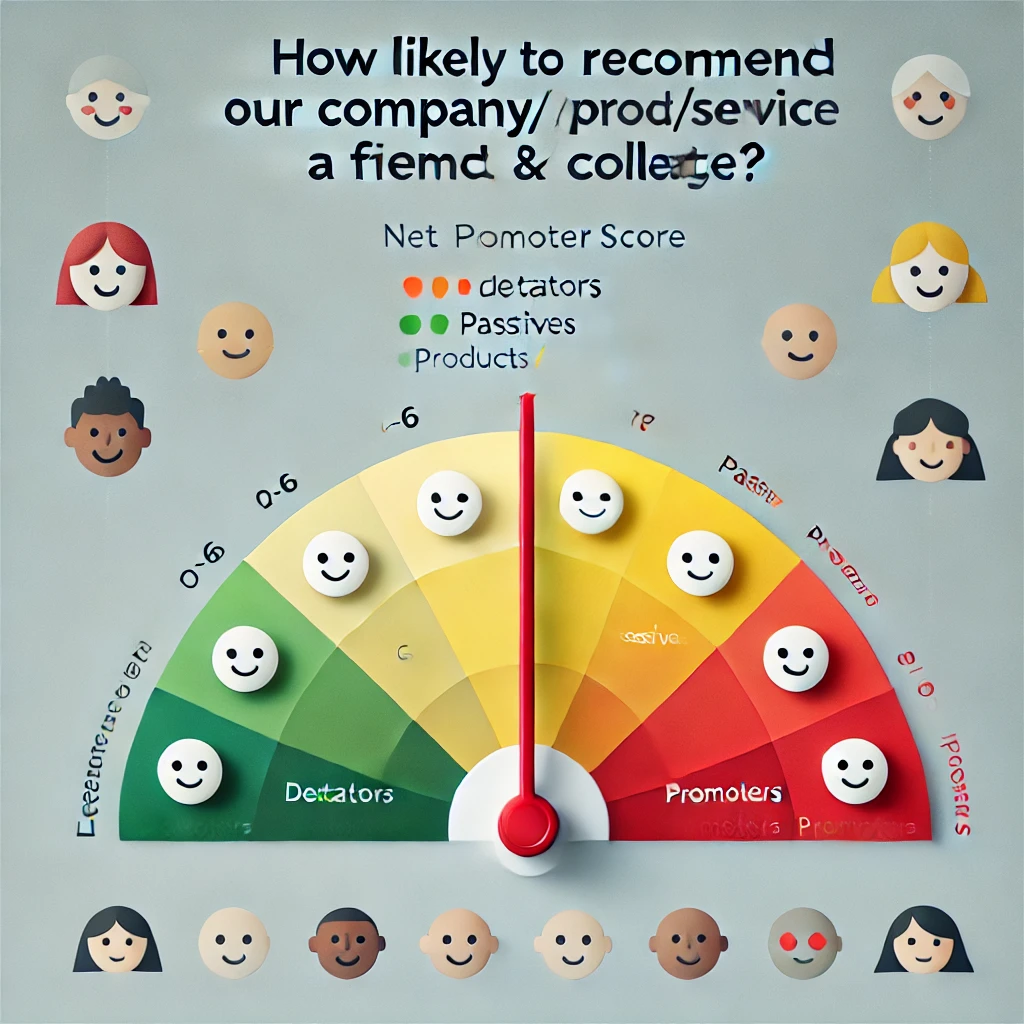In today’s customer-centric business landscape, companies constantly seek ways to measure customer satisfaction and loyalty. Among the many tools available, the Net Promoter Score (NPS) survey stands out due to its simplicity, efficiency, and effectiveness in providing actionable insights. It is a single-question survey that asks respondents to rate the likelihood that they would recommend a company, product, or service to a friend or colleague on a scale from zero to ten.
What is NPS?
The Net Promoter Score, introduced by Fred Reichheld in 2003, is based on the premise that the best way to gauge customer satisfaction is to understand how likely they are to recommend a business. The core NPS question is:
“On a scale from 0 to 10, how likely are you to recommend [our company/product/service] to a friend or colleague?”
Respondents select a number that reflects their likelihood to recommend. Based on their answers, they are categorized into three distinct groups:
- Promoters (9-10): These are loyal enthusiasts who are highly likely to recommend the company to others. Promoters drive growth and are more likely to make repeat purchases.
- Passives (7-8): These customers are satisfied but unenthusiastic. They are not as likely to promote the company, and they can be swayed by competitors.
- Detractors (0-6): These are dissatisfied customers who can damage the brand through negative word-of-mouth and are at a higher risk of churn.
The NPS is then calculated by subtracting the percentage of detractors from the percentage of promoters. The score can range from -100 (if all respondents are detractors) to +100 (if all are promoters).
Formula: NPS= Promoters% − Detractors%
A positive score generally indicates more promoters than detractors, while a negative score suggests an issue with customer satisfaction and loyalty.
Why Use NPS?
The simplicity of the NPS survey is its primary strength. In an age where customers are bombarded with lengthy surveys, the NPS’s single-question format drastically increases response rates. Despite being short, it provides valuable insights that can be a predictor of future growth. Here’s why businesses should consider adopting NPS:
- Customer Loyalty and Retention: NPS focuses on customers’ likelihood to recommend, which correlates directly with loyalty. Loyal customers are more likely to stick around, even if competitors offer similar products or services.
- Actionable Insights: While the NPS question itself is straightforward, it opens the door for follow-up questions, such as “What is the primary reason for your score?” This qualitative feedback helps businesses identify key areas for improvement.
- Benchmarking: NPS is widely used across industries, which means it can be a great benchmarking tool. Companies can compare their NPS against industry averages and set goals to improve customer loyalty.
- Focus on Growth: Research has shown that companies with high NPS tend to grow faster than their competitors. Promoters drive referrals, which in turn leads to organic growth through word-of-mouth marketing.
- Cross-functional Benefits: NPS isn’t just a customer service tool; it’s useful across various departments. Marketing teams can use the score to craft strategies, sales can address pain points for detractors, and product development can innovate based on customer feedback.
Implementing NPS
Deploying an NPS survey can be done via multiple channels: email, website pop-ups, SMS, or even in-app surveys for digital products. The key to effective NPS usage lies in its integration into regular feedback cycles. Companies that review NPS data quarterly or monthly can stay ahead of customer trends and proactively address potential issues.
Moreover, combining NPS with other metrics, such as Customer Satisfaction (CSAT) or Customer Effort Score (CES), can provide a more comprehensive view of customer experience.
How to Interpret NPS Scores
While NPS results can range from -100 to +100, understanding the score’s context is crucial. For instance, an NPS of 50 is excellent in some industries, while in others, it might be average. Here’s a general guideline for interpreting NPS scores:
- +50 and above: This is considered excellent and indicates a large majority of promoters.
- +20 to +49: This is a good range, suggesting that a company has more promoters than detractors.
- 0 to +19: The company has a neutral NPS, which could signal opportunities for improvement.
- Below 0: A negative NPS is a red flag, indicating that detractors outnumber promoters, which often points to deeper issues in the customer experience.
The Net Promoter Score survey’s simplicity and effectiveness make it a valuable tool for companies looking to measure and improve customer loyalty. By focusing on how likely customers are to recommend a company, NPS serves as both a measure of customer satisfaction and a predictor of future growth. As businesses increasingly recognize the importance of loyalty and word-of-mouth referrals, NPS continues to be a cornerstone of modern customer feedback strategies.


